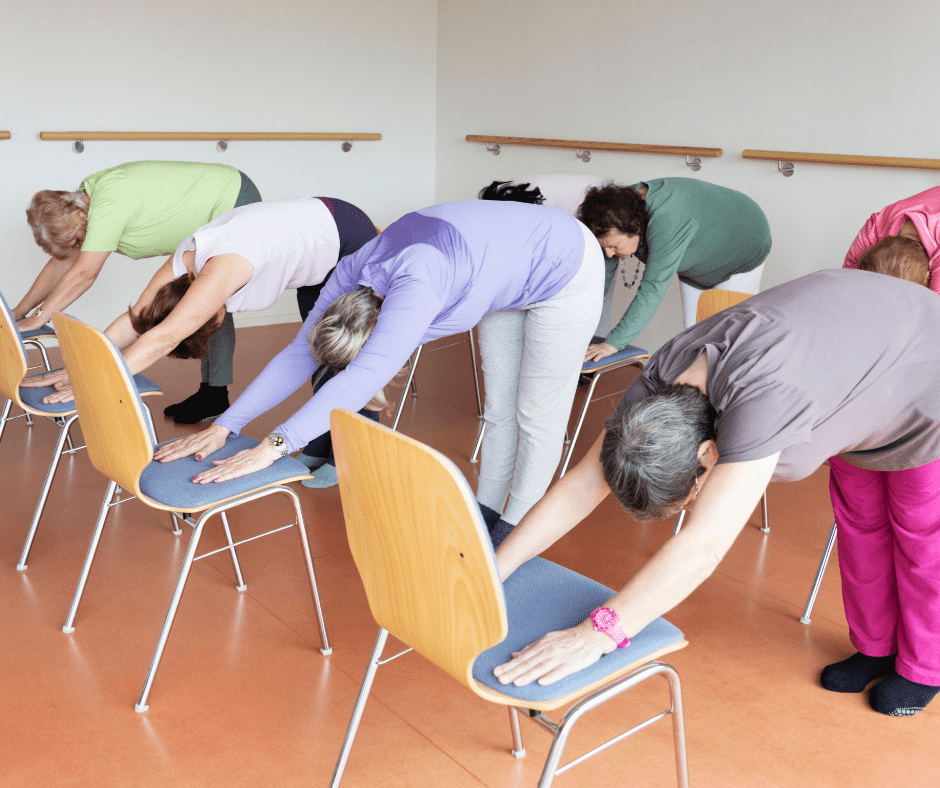We already know it’s important to regularly exercise. But how much? How often? What kind of exercise is best?
There are many details and questions about creating the right fitness program for yourself. As we shared in our January 2020 blog post, it is important to set goals for yourself prior to beginning a new exercise regimen. After you set your goals, it is important to incorporate different kinds of exercise into your routine–cardiovascular endurance, strength training, flexibility, and stretching.
There are several general recommendations about these types of exercise so you can achieve their many health benefits. This blog post will cover some of these “must-haves” in your exercise routine.
Cardiovascular Training Recommendations:

According to the CDC, healthy adults should aim for 150 minutes of moderate-intensity cardiovascular activity weekly. This translates into five sessions of 30 minutes each week.
Cardiovascular endurance can be achieved through walking, bicycling, swimming, dancing, or other creative avenues. The key is to work at an intensity where you find yourself breathing slightly harder or faster than when at rest. But you should still be able to comfortably carry on a conversation with a workout buddy or if you were talking on the phone.
Another option is to complete 75 minutes of vigorous exercise each week. Because your body is working harder, the CDC has found your body achieves similar health benefits in half the time of a moderate-intensity workout.
You can achieve this recommendation through jogging/running, heavy cycling, or playing tennis or basketball. At this level of effort, you should feel slightly breathless but still able to complete short, brief sentences out loud. The CDC also approves of a person combining moderate and vigorous-intensity to add up to an equivalent mix of the two recommendations.
The health benefits of regular cardiovascular exercise are both physical and mental. Research shows that you can lower your risk of diabetes, cardiovascular disease, and some cancers with regular aerobic activity. You also can reduce your anxiety while boosting your mood and sleep quality!
And with the way 2020 has gone, we all could use less stress and more positivity!
Strength Training Recommendations:

The American College of Sports Medicine recommends that healthy adults (ages 18-64) perform a resistance training program twice per week on non-consecutive days.
- How many exercises?
- Aim for 8-10 exercises that strengthen the upper body, lower body, and core.
- See our blog posts from June 2020, July 2020, and August 2020 for starting ideas for these three body regions.
- How many repetitions and/or sets?
- Younger and middle-age adults should perform 1 set of 8-12 repetitions when beginning a resistance program.
- Older adults (>65 years of age) should perform 1 set of 10-15 repetitions when starting a new strength training program.
- How much resistance intensity?
- All adults should select a resistance level that challenges their body to fatigue by the last or second-to-last repetition.
- BUT, you should always select a resistance intensity that is safe, pain-free and allows you to perform the full movement of the exercise.
- What type of resistance?
- Free weights allow you to challenge the big and small muscles of your body.
- Weight machines allow you to isolate and focus on one muscle group at a time.
- There are pro’s and con’s to these types of resistance AND don’t be afraid to get creative:
- Use a milk jug or cinder block for heavier resistance at home.
- Purchase a resistance band to simulate different weight machines with a chair or table at home.
Regular strength training can result in a wide variety of health benefits. A person can increase their muscle mass and strength but also boost their bone density, improve their digestive system, and lower their blood pressure. Resistance training also shows similar mental health benefits as cardiovascular exercise.
Flexibility Recommendations:

The ACSM recommends that adults of all ages regularly stretch to maintain and improve their flexibility. Health benefits include improved range of motion, less soreness after activity, and reduced mental stress/anxiety. The ACSM suggests stretching at least 2-3 times per week where daily stretching is most effective. Stretches should focus on the shoulders, chest, low back, hips, quads, hamstrings, and calf muscles at a minimum. There are two types of stretches to consider:
1. Static stretch – in this version, you comfortably move into and hold the stretch for a recommended time. Do NOT bounce during this stretch. It is best to perform these stretches after physical activity.
a. Adults younger than 65, should hold stretches for 30 seconds and repeat up to 3 times.
b. Adults older than 65, should hold stretches for up to 1 minute and repeat up to 3 times.
2. Dynamic stretch – this type of stretch involves moving through all available mobility of an area fluidly but intentionally. These stretches are most effective when done prior to physical activity. Adults should perform 15-20 repetitions of each motion for the best results.
With any fitness program, it is important to work on your cardiovascular health, strength, and flexibility. These guidelines should help you get started towards achieving your new fitness goals of 2021 regardless of your access to gyms or fitness equipment. And when in doubt about if your exercise program is right for you, don’t hesitate to contact us for more information and a personalized fitness consultation.

